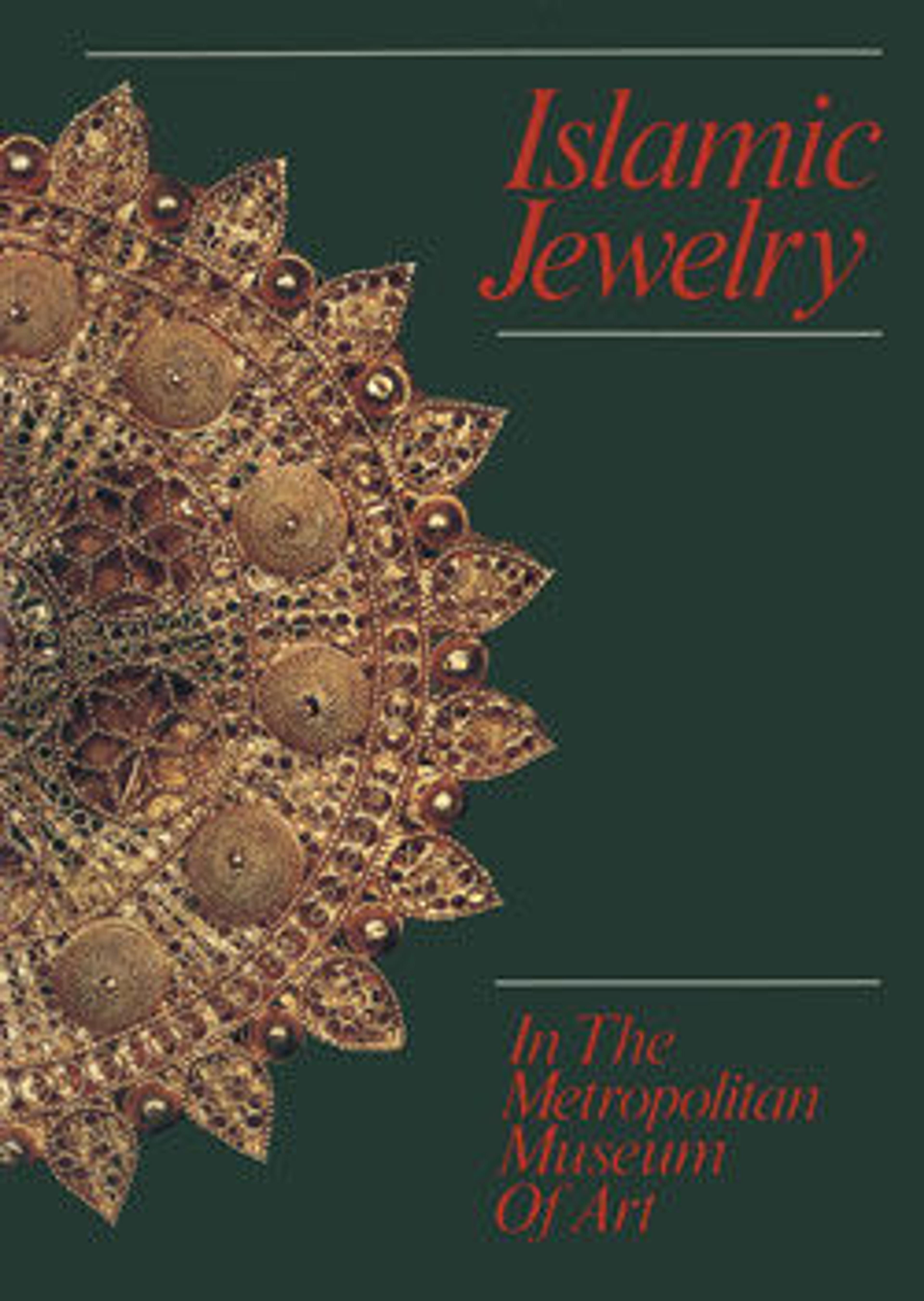Necklace
In jewelry, the Arabian Peninsula retained very old traditions with remarkable fidelity. In Yemen, in particular, this can be explained by the fact that the practice was solely the preserve of the Jewish population, among whom the art was passed from father to son. This necklace is of a well-known type that was presented to a girl once she reached the marriage age. These necklaces always have parallel rows of small beads joined by rectangular plaques (here, there is one central plaque set with green glass) and with triangular endpieces decorated in filigree. Amulet cases are suspended from the lowest strand of beads; on this example, there are three amulet cases, and a star-shaped pendant hangs from the central one. Techniques remained traditional too. The shot-constructed beads in this example are most directly a survival from medieval Islamic times, but can be traced even farther back.
Artwork Details
- Title:Necklace
- Date:19th century
- Geography:Made in Yemen
- Medium:Silver
- Dimensions:H. 8 11/16 in. (22 cm)
W. 10 5/8 in. (27 cm)
D. 3/8 in. (0.9 cm) - Classification:Jewelry
- Credit Line:Edward C. Moore Collection, Bequest of Edward C. Moore, 1891
- Object Number:91.1.1126
- Curatorial Department: Islamic Art
More Artwork
Research Resources
The Met provides unparalleled resources for research and welcomes an international community of students and scholars. The Met's Open Access API is where creators and researchers can connect to the The Met collection. Open Access data and public domain images are available for unrestricted commercial and noncommercial use without permission or fee.
To request images under copyright and other restrictions, please use this Image Request form.
Feedback
We continue to research and examine historical and cultural context for objects in The Met collection. If you have comments or questions about this object record, please contact us using the form below. The Museum looks forward to receiving your comments.
